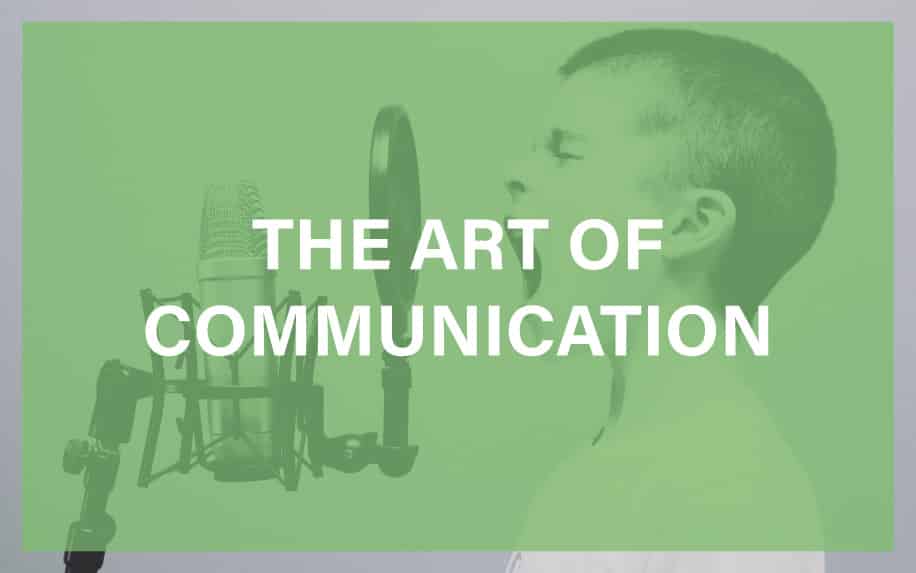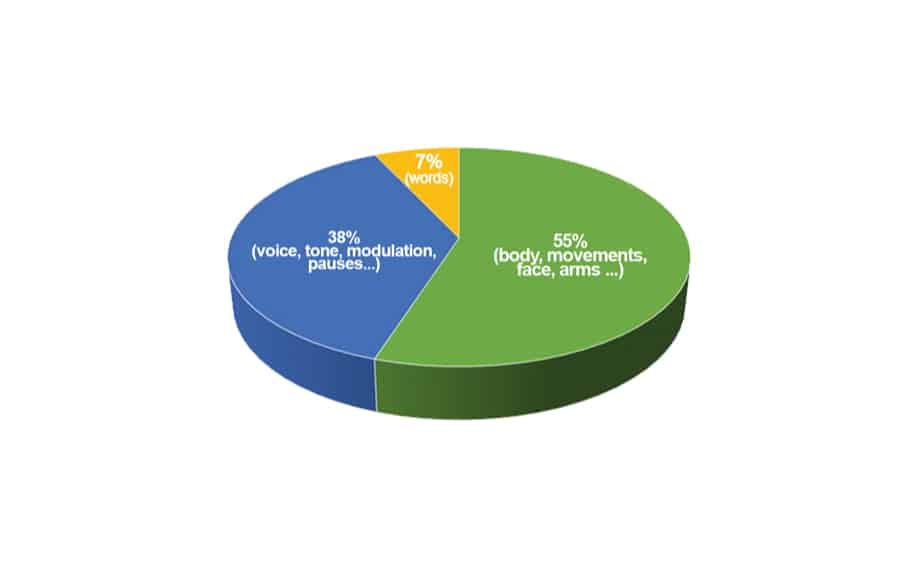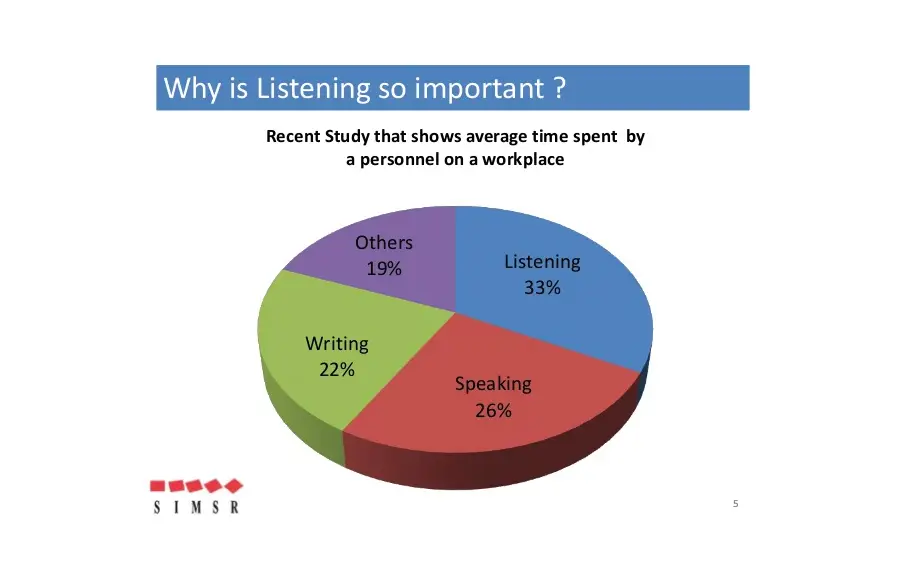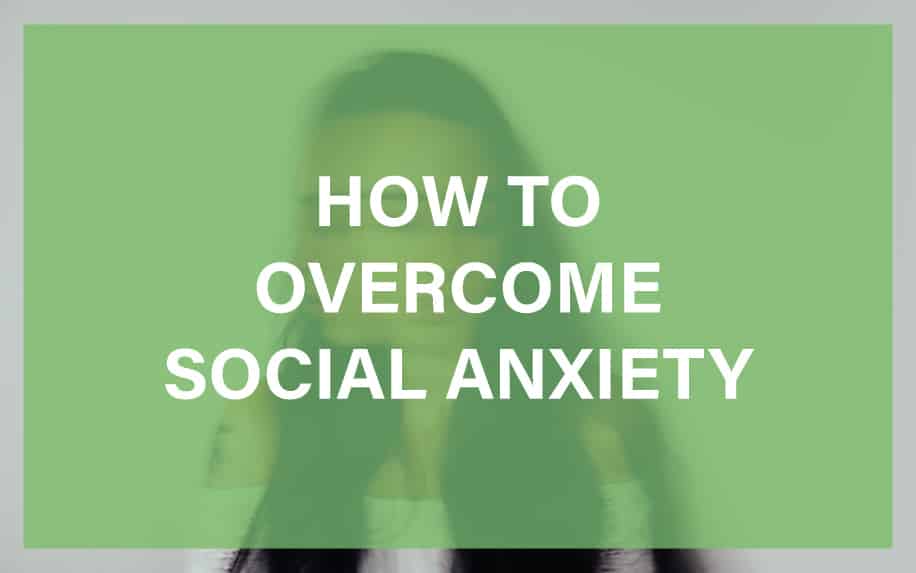The art of communication is your ability to listen and deliver information in a clear and accurate way. Therefore good reading, writing, speaking, and listening skills are important for achieving your goals and maintaining effective communication with your friends, family, colleagues and even strangers.
Developing good verbal and written communication skills are essential in our hectic world, especially given the rise of digital communication, where meanings are often lost and not translated accurately. The ability to effectively explain yourself and converse with others is an important skill, and mastering it can even be referred to as the art of communication – in this article, we’ll show you exactly how to do it.
Table of Contents
What Is the Art of Communication?
The art of communication is like the brushstrokes the painter uses to create a masterpiece. Typically, as a master of the art of communication, you will be able to deliver whatever message you need to deliver to the surrounding people every time you speak or write.
This is precisely what the art of communication is all about. It is the way you are able to interpret your emotions, thoughts and opinions into words.
Typically, communication can be classified into two main types:

- Verbal communication: This form of communication includes the use of sounds and language in order to convey your intended message.
- Non-Verbal communication: This includes everything else other than words like the posture, appearance, body language and eye movements of the speaker which helps emphasize the message being conveyed.
Both types of communication are equally important since they complement each other in order to eliminate confusion and ensure that the message being conveyed is clearly understood by its intended recipient.
Before you start working on improving these aspects of communication, let us first identify all the things relevant to the art of communication.
Understanding the Tools of the Art of Communication
There are many tools for communication that you’ll have to understand in order to master the art of communication. The better you become at using these tools, the better you’ll be at communicating.
Ultimately, it is very easy to become a master of communication, all you need is a little practice. Mastering your body language and tone will ensure that you will always be able to efficiently get your message across which is considered a success in communication.

Verbal Communication
Even in an advanced digital world, the spoken word is by far the most common form of communication. Here are the key elements of verbal communication.
Words
Words are very powerful when used correctly. They have the power to build or destroy. Words can build bridges that allow people to reach a level of understanding. Words can also destroy relations. Be very careful when choosing your words because people are usually judged by the words they use.
This is why it is important to choose your words wisely and always try to use colourful and rich words in order to captivate your audience. However, you need to ensure that your words remain clear and easily understood in order to avoid any confusion.
Words that communicate positive values and optimistic words are words of strength that will help you reinforce your opinions and convince your audience of your message. Using appropriate words to put forward your point of view makes you a master at the art of communication.
On the other hand, misuse of words may lead to the formation of a negative correlation that will only serve to further weaken a person’s message.
Vocabulary
Vocabulary plays a vital role in oral communication as it directly impacts the clarity, precision, and effectiveness of the message being conveyed. When a person possesses a rich and varied vocabulary, their ability to express ideas, emotions, and thoughts becomes more robust. Choosing an appropriate vocabulary usually reveals your level of language proficiency.
For example, an expanded vocabulary sets you apart which enhances the process of communication allowing you to convey your message to a large audience with great accuracy and efficiency.
In order to communicate better, you should choose your vocabulary according to your target audience. For example, you should use an expanded vocabulary when addressing professionals, while a more basic vocabulary might prove more effective when addressing an uninformed audience. For those looking to expand their vocabulary in different languages, regular practice is key. For instance, you could practice your Spanish with Lingoda, which could lead to an enhancement of your language proficiency and communication skills.
A wide range of vocabulary also instils confidence in public speaking. It enables the speaker to articulate their ideas with ease and poise, making them more effective in delivering speeches and presentations. A well-developed vocabulary empowers individuals to communicate more effectively, express themselves with greater precision, and foster better connections with others.
Tone
The tone is very important when it comes to delivering a speech or any other form of verbal communication. Tone allows the speaker to convey their emotions and feelings. The same words spoken with different tones can communicate happiness, anger, sadness, excitement, or sarcasm. This emotional expression helps the listener better understand the speaker’s intent and context.
Try to avoid monotony as it creates a sense of uninterest in the topic. Instead, your tone should change according to the context of the speech in order to capture the attention of your audience. This ultimately ensures that a large portion of your speech was taken in by the audience.
The tone also plays an important role in turn-taking during conversations. A rising tone at the end of a sentence might signal a question, while a falling tone might signal the end of a statement, these cues help maintain smooth interactions. It can also indicate whether the speaker is being serious, joking, making a request, giving a command, or expressing uncertainty. Without an appropriate tone, the listener might misinterpret the intended meanings, so it’s important to ensure your tone is in check.
Pace
The pace of communication refers to the speed at which a person speaks or conveys information during a conversation or presentation. It is an important aspect of verbal communication that can significantly influence the effectiveness of the message delivery. The pace of communication can vary depending on the context, audience, and the speaker’s objectives. The speed of your speech tells others a lot.
A moderate and varied pace can help maintain the listener’s engagement and attention. A well-paced speech captures the listener’s interest and prevents monotony. By strategically adjusting the pace, the speaker can emphasize critical information and maintain the listener’s focus.
Speaking slowly communicates thoughtfulness which implies that you want others to hear and understand your message while speaking fast communicates that you are excited, encouraging your audience to be interested in the topic at hand.
When working on pacing your speech, it is often helpful to have a listener that you can observe in order to change your pace accordingly to their reactions. After all, having a connection with your audience will ensure that your pace is perfect.
A balanced and well-adapted pace can improve the effectiveness of communication, help maintain engagement, and convey the intended message more clearly. Effective communicators are mindful of their pace and make adjustments based on the audience and the content they are delivering.
Emotions
Similar to your tone, emotions are a very effective communicator. Conveying emotions in communication is essential because it adds depth, authenticity, and meaning to our interactions. It plays a significant role in how we interpret and respond to the messages we receive.
Emotions are a powerful way to connect with others on a deeper level. When we express our feelings, we show vulnerability and allow others to relate to us on an emotional level. This builds empathy and fosters stronger relationships. For example, laughing will communicate that you have a fun side while frowning will communicate that you have an empathetic side. This clearly makes it a very powerful tool in helping you deliver your messages.
Emotionally charged communication is more engaging and memorable. Emotions capture attention and evoke responses from the audience. People are more likely to remember and be impacted by a message that stirs emotions.
Ensuring that you can convey appropriate emotions in communication is crucial for establishing meaningful connections, fostering understanding, influencing others, resolving conflicts, and creating a positive and authentic environment. Emotions add richness to our interactions and make our communication more effective, impactful, and fulfilling.
Enunciation
This is arguably the hardest verbal communication skill to master. In order to ensure that the listener clearly understands your message, you need to ensure that you are speaking clearly as a clear pronunciation of the words makes it easily understood by the audience.
Effective enunciation involves articulating each word, vowel, and consonant properly, making speech more intelligible and improving overall communication. it also helps prevent misinterpretation or misunderstanding of the intended message. When the speaker pronounces words distinctly, it becomes easier for the listener to comprehend what is being said.
Improving enunciation involves practising proper speech techniques, being mindful of pronunciation, and paying attention to how sounds are formed. It is a valuable skill that can significantly enhance one’s ability to communicate effectively and be understood by others.
Non-Verbal Communication
Despite the extreme importance of verbal communication, non-verbal communication is essential to get your message across. This type of communication is a critical aspect of human interaction that complements and often enhances verbal communication. It involves conveying information, emotions, and intentions through gestures, facial expressions, body language, eye contact, posture, and tone of voice.

Non-verbal cues enable individuals to practice active listening and demonstrate empathy. Paying attention to the speaker’s body language and expressions shows genuine interest in their message and emotions.
They also provide additional context and meaning to verbal messages, helping to clarify the speaker’s intent and emotions. They aid in understanding the underlying emotions, attitudes, and motivations behind the words spoken, a key component within the art of communication.
A large percentage of nonverbal communication falls into the following categories:
Speaking Posture
Posture is a critical element of non-verbal communication that involves the way individuals hold and position their bodies during interactions. It conveys valuable information about their emotions, attitudes, confidence, and overall demeanour.
Changing body position (sitting, standing or kneeling) during presentations can have a huge effect on the nature of the message being sent across. For example, sitting creates a more casual, laid-back environment while standing gives the impression of seriousness and professionalism.
A person who leans forward or faces the speaker directly demonstrates active engagement and interest in the conversation. Leaning away or avoiding eye contact, on the other hand, may indicate disinterest or discomfort. In public speaking or high-stress situations, posture can betray nervousness or confidence. People may display fidgeting or closed-off body language when anxious, while a composed and open posture suggests confidence.
Being mindful of your posture can seriously help you excel in the art of communication, and being observant of others’ body language can also improve your communication effectiveness, help build positive relationships, and enhance overall interactions.
Eyes
Eye contact is a powerful non-verbal communication tool that involves maintaining visual contact with others during conversations. It plays a significant role in the art of communication, as it can convey various emotions, establish connections, and enhance the overall effectiveness of the interaction.
It is well known that “Eyes are the window to the soul”. Looking into the eyes communicates caring. It is a sign of respect and understanding. On the other hand, speaking with others while looking around communicates a lack of interest.
Eye contact helps build trust and rapport between individuals. It conveys honesty, sincerity, and authenticity, making the speaker more credible and reliable in the eyes of the listener. It can allow for a more profound level of understanding and connection between individuals. It enables both parties to pick up on non-verbal cues and emotions, enhancing the overall comprehension of the message being conveyed.
Within the arena of the art of communication, eye contact is a fundamental aspect. It fosters engagement, trust, and understanding between individuals, making conversations more meaningful and successful. Being mindful of appropriate eye contact and using it to express emotions and establish connections can significantly enhance one’s communication skills and interpersonal relationships.
Arms
The position of the arms in the art of communication is a crucial aspect of non-verbal communication that conveys various messages and emotions. The way individuals hold and use their arms during interactions can influence how they are perceived by others and impact the overall effectiveness of the message.
When it comes to arm body language, there are a few strategies that are commonly used. Expanding your arms helps you appear larger in an attempt to reach out to your audience. This can either have a friendly or threatening effect depending on the context. However, using arm gestures while speaking can add emphasis and animation to the message. It helps illustrate points, convey emotions, and keep the listener engaged.
Actions like crossing the arms while speaking can also communicate fear, closure, and defensiveness which implies that your argument is weak. Likewise, hiding your arms while speaking gives the listener an impression of dishonesty and deceit as if you were hiding something.
Resting an arm on a table or object while standing or sitting can communicate relaxation and a sense of ease during the conversation while placing hands on the hips can signify assertiveness or impatience. It is often associated with a confident or commanding posture.
The interpretation of arm positions in communication can vary based on cultural norms, individual habits, and the context of the interaction. When using arm positions during communication, it’s essential to be mindful of the signals being conveyed and adjust them as needed to match the intended message and create a positive and engaging communication environment.
Hands
It is important to use your hands when communicating a message, as keeping your hands by your side communicates stiffness and the feeling of uncomfortableness Touching the face while communicating may also signal various emotions, such as contemplation, nervousness, or uncertainty. Examples include touching the chin, covering the mouth, or rubbing the forehead.
Many people ‘talk with their hands’ meaning they use them to emphasise points and illustrate their verbal communication. The dynamic movement of your hands will keep the audience engaged and interested in what you have to say.
Hand movements can help express emotions like excitement, frustration, surprise, or sadness. They add depth to the spoken words and provide additional context to the speaker’s feelings. Hand gestures can also improve memory recall of information. When words are accompanied by relevant gestures, they are more likely to be retained and remembered.
However, it is crucial to use hand gestures judiciously and consider the appropriateness of the context and cultural norms. Overusing gestures or making inappropriate gestures can distract from the message and negatively impact communication. As with all forms of non-verbal communication, using hands in communication is most effective when it aligns with the speaker’s authentic style and enhances the overall message being conveyed.
Why Is It Essential to Improve Your Communication Skills?
The art of communication is important in all aspects of our life either personally or professionally. It is extremely vital in persuading your audience, delivering a message and ultimately saying what you want to say in the most effective way.
Improving your communication skills is essential for numerous reasons, as effective communication is a foundational aspect of personal, professional, and social success. Here are some key reasons why improving communication skills is crucial:
- Building Relationships: Effective communication fosters stronger and healthier relationships with family, friends, colleagues, and acquaintances. Good communication builds trust, understanding, and empathy among individuals.
- Conflict Resolution: Strong communication skills enable individuals to navigate conflicts and disagreements more effectively. Being able to express thoughts and emotions clearly can lead to productive conversations and peaceful resolutions.
- Career Advancement: Communication is a vital skill in the workplace. Being able to articulate ideas, work collaboratively, and engage with others professionally can lead to career growth and opportunities.
- Expressing Ideas Clearly: Improved communication skills allow individuals to convey their thoughts, knowledge, and expertise more clearly and persuasively, whether in written or verbal form.
- Active Listening: Effective communication involves not only expressing yourself but also being an active listener. Improved listening skills facilitate better understanding and stronger connections with others.
- Networking and Social Interactions: Good communication is essential in social settings and networking situations. It helps individuals make meaningful connections and build a positive impression on others.
- Confidence Boost: Improving communication skills boosts self-confidence. When you can communicate your ideas effectively, you feel more assured in expressing yourself and engaging with others.
- Empathy and Emotional Intelligence: Effective communication requires understanding others’ emotions and perspectives. Developing communication skills can also enhance emotional intelligence and empathy towards others.
- Reducing Misunderstandings: Clear communication minimizes misunderstandings and misinterpretations, preventing unnecessary conflicts and improving overall interactions.
- Adapting to Diverse Audiences: Improved communication skills enable individuals to adapt their communication style to different audiences, cultures, and social contexts.
- Public Speaking and Presentations: Enhancing communication skills empowers individuals to deliver compelling and impactful public speeches or presentations, which are valuable in various settings, including professional, educational, and community events.
- Negotiation and Persuasion: Effective communication is crucial in negotiation and persuasion scenarios, where the ability to articulate ideas and reach mutually beneficial agreements is essential.
- Problem Solving: Good communication enhances problem-solving abilities by promoting open dialogue and collaboration among team members.
- Personal Growth: Improving communication skills is an ongoing process that contributes to personal growth and continuous learning.
How to Improve The Art of Communication
There are many ways to improve your skills in the art of communication. Check out some of these points below to help you.
Listening
Listening well to others’ opinions or points of view and asking for clarification to avoid misunderstanding is very beneficial in many ways:-
- Gives you time to think over the words said to you and help you understand the group/person you are communicating with.
- Provides you the chance to decide the perfect approach to the group/person you are communicating with.
- Emotionally prepares your target group/person to listen to you since you listened to them carefully, because it is well known that people want to be heard, so if you give them 100% attention they will give you theirs.
- Provide you with enough time to take notes instead of relying on memory alone to be able to analyze it later.
- Knowing the group/person you are communicating with.
Listening will ultimately allow you to accurately identify your audience which will help you communicate with them better by adapting the techniques that most suit them.

Practice Empathy
Try to understand others’ feelings and viewpoints, and respond with empathy and compassion. This enhances your ability to connect with others on an emotional level.
Seek Feedback
Ask for feedback from trusted friends, family, or colleagues about your communication style. Constructive feedback can help you identify areas for improvement.
Practice Public Speaking
Engage in public speaking opportunities to build your confidence and speaking skills by integrating life coaching techniques such as goal-setting, confidence building, and effective feedback reception. Join a debate club, practice in front of a mirror or with a small group of friends.
Read and Write Regularly
Reading diverse materials improves your vocabulary and comprehension, while writing regularly hones your ability to articulate your thoughts effectively.
Use Visual Aids
When presenting information, use visual aids like slides, charts, or images to support your message and make it more engaging.
Practice with Different Audiences
Communicate with people from various backgrounds and demographics to improve your ability to adapt your communication style to different audiences. This will help you excel in the art of communication.
Seek Opportunities to Communicate
Look for opportunities to practice your communication skills in different settings, such as meetings, social events, or networking gatherings.
Maintaining Positivity
Having a positive attitude and smiling while talking to others makes people respond positively. Being self-confident, brief and precise leads you to provide enough information for this group/person to understand your messages.
Finally, you should make sure to give equal attention to everyone. Treat everyone equally and never talk down or underestimate anyone.
Sub-Types Based on Communication Styles
What type of communication are you delivering? check out these sub types.
- Assertive Communication: Characterized by respect for oneself and others, assertive communicators express their needs and opinions clearly and respectfully.
- Aggressive Communication: Involves expressing oneself in a forceful and often disrespectful way, potentially infringing on others’ rights.
- Passive Communication: Passive communicators often fail to express their feelings or needs, allowing others to infringe upon their rights.
- Passive-Aggressive Communication: This style involves expressing negative feelings indirectly rather than openly addressing them.
- Interpersonal Communication: Involves direct, face-to-face communication between two or more individuals.
- Intrapersonal Communication: This is communication with oneself, involving thinking, analyzing, and reflecting internally.
Art of Communication Books
There are numerous books that delve into the art of communication, offering valuable insights, techniques, and strategies to improve one’s communication skills. Here are some highly regarded books on the topic:
- “How to Win Friends and Influence People” by Dale Carnegie: A classic in the field of communication and interpersonal skills, this book provides timeless advice on building relationships, effective communication, and influencing others positively.
- “Crucial Conversations: Tools for Talking When Stakes Are High” by Kerry Patterson, Joseph Grenny, Ron McMillan, and Al Switzler: This book offers practical strategies for handling difficult conversations and addressing sensitive topics with empathy and respect.
- “Nonviolent Communication: A Language of Life” by Marshall B. Rosenberg: This book introduces the concept of nonviolent communication, which aims to foster compassion and empathy in interpersonal interactions.
- “The Art of Communicating” by Thich Nhat Hanh: A Buddhist monk and renowned spiritual teacher, Thich Nhat Hanh, provides profound insights into mindful and compassionate communication.
- “Talk Like TED: The 9 Public-Speaking Secrets of the World’s Top Minds” by Carmine Gallo: This book analyzes successful TED talks and provides tips on delivering compelling and engaging presentations.
The Process of Communication
Although communication is nuanced and often unpredictable, it typically follows this structure:
- Sender: The person or entity that wants to convey a message.
- Message: The information, idea, or feeling that the sender wants to share.
- Encoding: The process of turning the message into a form that can be transmitted. This could be in the form of language, symbols, gestures, etc.
- Channel: The medium through which the message is sent. This could be spoken words, written text, electronic media, etc.
- Receiver: The person or entity that receives the message.
- Decoding: The receiver’s process of interpreting and understanding the message.
- Feedback: The response of the receiver back to the sender, indicating whether the message was understood as intended.
- Noise: Any interference that might distort or interrupt the message during the transmission process. This could be literal noise, like background sounds, or metaphorical, like a misunderstanding.
Understanding this process may hep you identify which areas of communication you need to work on further.
Mastering the Art of Communication
The art of communication has been a topic of interest over several decades due to its extreme power. By mastering the art of communication, you can ensure that you effectively get your message across to any sort of audience which will guarantee you more opportunities in life.
We’ve discussed the two main aspects of the art of communication.
The first being verbal communication which focuses on your voice and the language you use which not only captivates the audience but ensures that they fully understand the message.
Second, was non-verbal communication which acts as a compliment that reinforces your message through body language in order to establish your presence.
Mastering this skill is essential to the success of both your personal and professional life as it provides you with many opportunities that you would otherwise not have. This is why it is important to always practice your communication skills in order to always be ready to use them. For more articles regarding helpful personal skills, check out our article about leadership training programs.
SEE ALSO: Best regards alternatives | Stage Fright | Personal Development | Personal and Professional Development | Personal Development in your Workplace | Benefits of a Personal Development Plan.



i need better facts about this speech its due next Wednesday
Hello this information is very helpful. But I would really love to also get information concerning the communication process, types of communication art, I mean all types,
It’s really excellent inspiring information.i am glad I read it.
Fantastic Article and very insightful.